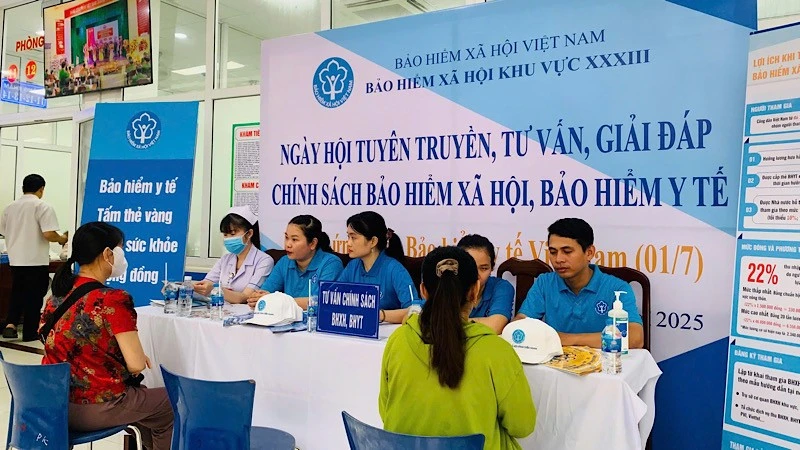Clothes of Red Dao men often feature simple patterns while those of women are highly meticulous, from the making method to patterns. Their knee-length upper garments have V-shaped and embroidered necklines and sophisticated embroideries on the backs. It takes many steps such as weaving, embroidering, decorating, cutting, and combining fabric pieces to create a colourful dress of Dao women because various distinctive and colourful decorations need to be embroidered such as the shapes of animals, objects, plants and amulets, or belief-related decorations.
With subtle and meticulous details, the traditional costume of Dao people is deeply imbued with their ethnic group’s cultural identity. They use four main colours – red, yellow, green, and white – to decorate their black outfits with complicated and charming patterns.
The costume of Red Dao women in Yen Bai includes head scarves, neck scarves, upper-body garments, trousers, brassieres, and belts.
There are three types of upper-body garments of women – one for daily use, another for merry days, ceremonies, or festivals, and the remainder for wedding days when they are brides. The more important an occasion is, the more patterns the dress worn on that occasion features, and hence, it is more difficult to make that dress.
The upper-body garment is basically a four-panel one with a deep V-shaped neckline and embroidered with a number of patterns depending on each person’s taste. The neckline’s outer edge is adorned with two red lines that symbolises "dum dumâ€, also called "wild raspberryâ€. The lowest part of the neckline is attached with two fringes making the dress even more elegant. Cuffs are also embroidered for about 15cm high.
Meanwhile, all the four panels of the bride’s dress are almost fully covered with embroideries.
Brassieres also form an indispensable part of Dao people’s costume. Aside from patterns embroidered on the outer edge, the centre of a brassiere is decorated with silver patterns, including seven rectangular pieces, two lines of coins, and 25 flower-shaped patterns. A brassiere has a round neckline as well as embroideries on its back, and covers both the chest and belly.
An important highlight of Dao women’s costume is the head scarf, which could be a square, rectangular, or long piece of cloth. Head and neck scarves are also meticulously embroidered. Patterns on scarves are similar to those on upper-body garments but arranged in many layers so that scarves will form square shapes and reveal patterns when they are worn on heads, thus making them even more beautiful.
Belts are simpler as they are just a red strip of cloth, but that simplicity is also a highlight of Red Dao women’s outfits.
Not only traditional outfits, the costume of Dao people also reflects the diversity of and the ethnic group’s creativity in colour and pattern use.
Those patterns embody the worldview and outlook on life of Dao people, as well as distinctive spiritual meaning. Such colours like red, green, yellow, and purple make up a bright and harmonious combination on their clothes.
The costume is not only good-looking but also demonstrates Dao people’s respect for and maintenance of their traditional culture. Each outfit carries a different story, making it not only a thing for daily use but also a symbol and part of the ethic group’s identity and soul.
The beauty of Dao people’s costume has become a source of inspiration for fashion designers and culture lovers, many of whom have sought to include the costume’s traditional features in modern designs to invent creative and impressive outfits. This has also helped preserve and popularise traditional cultural values among younger generations and society today.
Thanh Ba





































